
March 11 garden
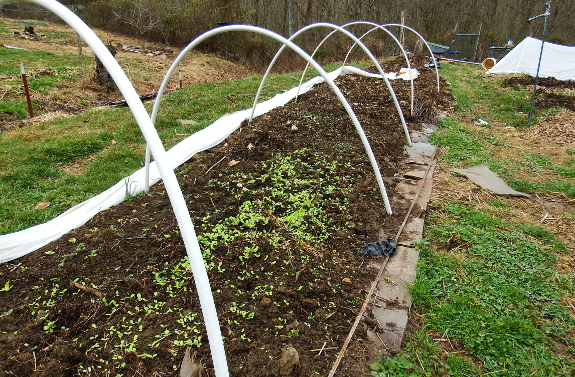
In early March, the grass
is just barely starting to grow and there's not very much to see yet in
the garden. But, despite the brownness of winter, this is still a
pivotal time of the growing year. Not only am I making new beds like the
one shown here, I'm also planting annuals and nurturing perennials.
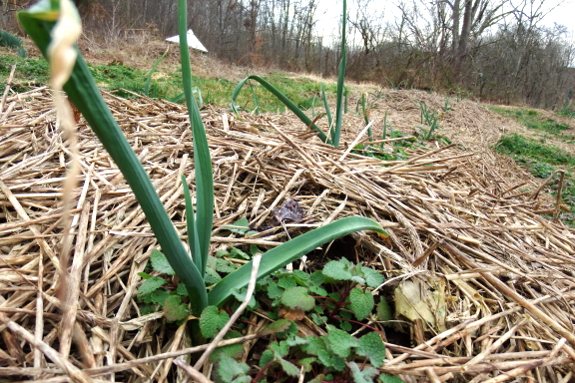
On the list for the month
--- weeding around the garlic, which is starting to grow like
gangbusters now that the serious cold has fled. A newspaper layer
beneath the straw did a great job keeping weeds at bay everywhere except
around the plants themselves. But it's still better to yank that dead
nettle before it goes to seed!
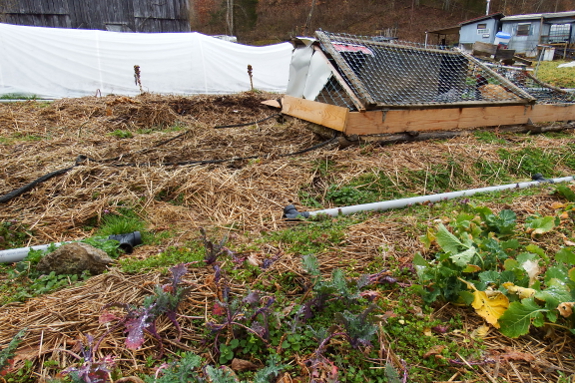
Other overwinterers won't
be around long, so I'll wait to deal with weeds until it's time for the
next crop. Above, you can see the tiny bit of kale that survived the
winter under a quick hoop. Now exposed to spring rains, the leaves are
slowly but surely beginning to grow again.
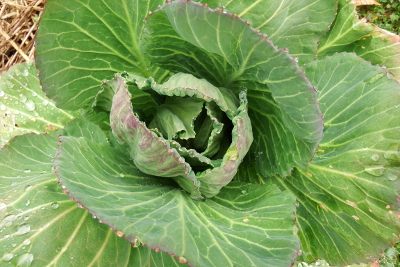 The
cabbage shown to the left was more of a surprise. I can't recall
whether it was just a small plant that didn't have time to head up last
fall or a plant that resprouted after I harvested the main head. Either
way, it accidentally got covered by a quick hoop due to its proximity to
the parsley. And when I took off the cover, the crucifer started to
regrow. I guess we'll have one ultra-early cabbage this year!
The
cabbage shown to the left was more of a surprise. I can't recall
whether it was just a small plant that didn't have time to head up last
fall or a plant that resprouted after I harvested the main head. Either
way, it accidentally got covered by a quick hoop due to its proximity to
the parsley. And when I took off the cover, the crucifer started to
regrow. I guess we'll have one ultra-early cabbage this year!
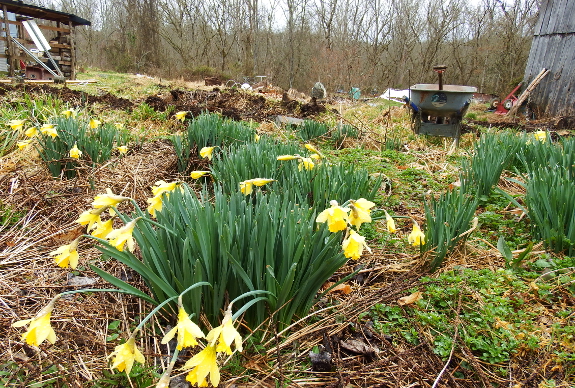
Most of my attention,
though, is focused on March, April, and May plantings. To that end, I'm
spreading various types of compost on spring beds. I'm not 100% happy
with any of my homegrown compost...yet. But that's okay because a little
extra time in the dirt works wonders toward mitigating high-nitrogen
chicken bedding and high-carbon garden-weed compost. Here, I'm
topdressing beds that won't be planted until the first of May, giving
the compost plenty of time to mellow in the interim.
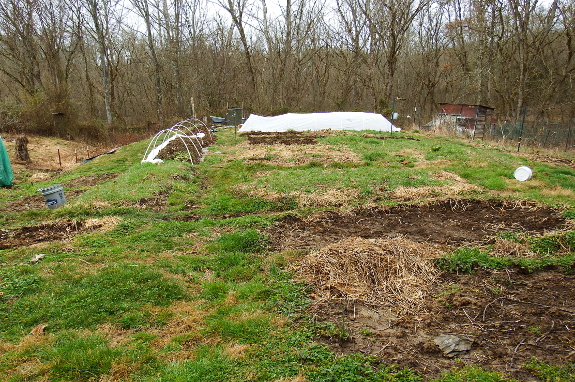
This final shot shows the
results of my February garden-redesign campaign. I shoveled all the
good dirt from shady beds to make one long new bed on the left side of
the photo in an area that enjoys full sun. The topsoilless areas in the
foreground will be seeded in oats and clover so goats can enjoy a nibble
as I work in the garden.
There are a few more
areas I want to redesign too. But now that spring is here, I suspect
those beds won't be remade until the fall. Oh well, my garden is now and
always a work in progress!
Want more in-depth information? Browse through our books.
Or explore more posts by date or by subject.
About us: Anna Hess and Mark Hamilton spent over a decade living self-sufficiently in the mountains of Virginia before moving north to start over from scratch in the foothills of Ohio. They've experimented with permaculture, no-till gardening, trailersteading, home-based microbusinesses and much more, writing about their adventures in both blogs and books.
Want to be notified when new comments are posted on this page? Click on the RSS button after you add a comment to subscribe to the comment feed, or simply check the box beside "email replies to me" while writing your comment.
- Remove comment
- Remove comment
- Remove comment
